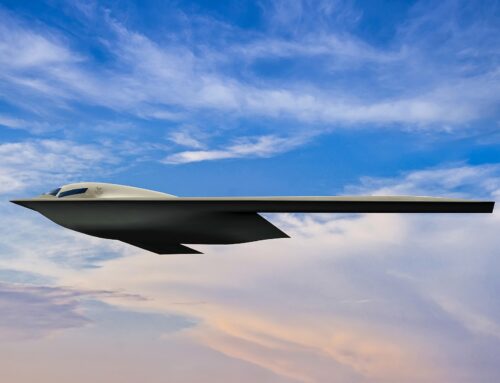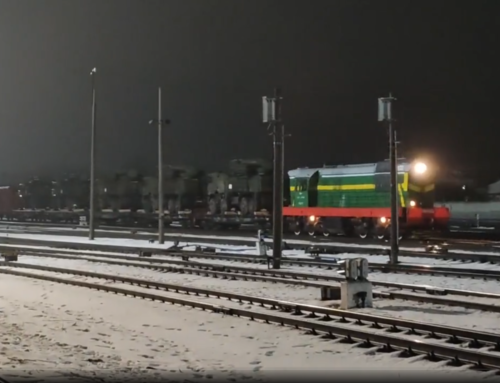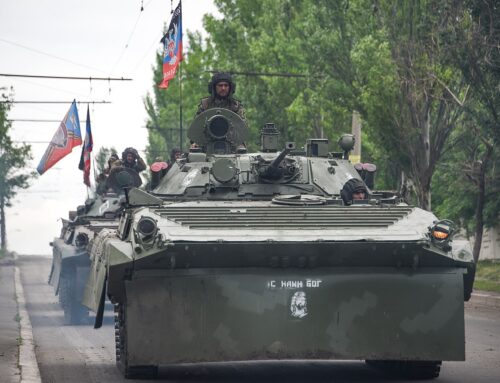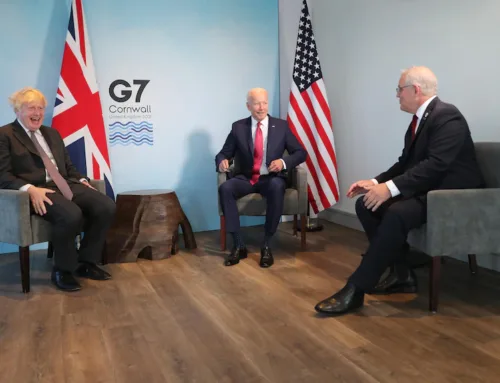For anyone who follows Open Source Intelligence (OSINT) accounts on Twitter, you will have undoubtedly seen dozens, if not hundreds, of videos purportedly showing Battalion Tactical Groups (BTGs) of the Russian Ground Forces, loaded onto trains travelling west or located in assembly areas near the border with Ukraine. At the state level, various intelligence-gathering methods would provide a clear picture of what Russia is doing. Indeed, it appears that US intelligence sources have been very efficient, something we rarely see illustrated because of how close to the chest state-based intelligence is kept. But this very public mobilisation of a significant portion of the Russian Ground Forces is virtually unprecedented. Is this what military action in the age of smartphones will look like, or is this just a part of Putin’s plan against Ukraine?
There is no doubt that military mobilisation has always been a difficult secret to keep. People talk, and when you’re unexpectedly tasked with loading several BTGs worth of equipment onto trains, news of it will get out. This is especially true when reserves are called up as this is an uncommon event. Even in 1941, there were clues ahead of Operation Barbarossa and the attack on Pearl Harbour.
Communications technology is far more sophisticated today which makes it infinitely more difficult to hide military mobilisation measures. In the age of Web 2.0 and the smartphone, the ease of the instantaneous sharing of image and video content could simply make it impossible to confound intelligence-gathering methods; even in authoritarian states such as Russia.
What is far easier to hide in a modern military mobilisation are cyber assets. Cyber-attacks conducted by Russian assets are common, especially in Ukraine which has borne the brunt of such attacks since 2014. While the potential for damage from cyber-attacks is contested, there is no doubt that this grey-zone conflict will be an integral part of any Russian action against Ukraine. Several Ukrainian websites and banks have gone down over the past several weeks. Perhaps it is just a taste of what is to come for Ukrainians and the West.
Most of the released video content comes from Chinese-owned TikTok and is shared via Twitter or encrypted messaging platforms such as Russian renegade Pavel Durov’s Telegram. While Telegram’s nature makes it harder to restrict, TikTok is a platform that Russia could theoretically block access to if it wished, but yet it hasn’t. The Kremlin is clearly not that concerned about public videos of their mobilisation. For all we know, Russian intelligence is responsible for many of these videos.
But is this because Putin wants the build-up seen not just in the capitals of Europe and the US but also by the average person on the streets of Kyiv and other eastern European nations? The question of whether Russia invades is still open, but the public nature of this military build-up makes it appear part of a psychological operation (PSYOP) against Ukraine.
If so, Putin may have miscalculated. Despite some Russian sympathies in the government, Ukrainians by and large do not want to be dominated by Moscow again. Tens of thousands of people from all walks of life are preparing for an insurgency to ensure that any aggression will prove costly for Russia. This is perhaps best illustrated by the video of the 78-year-old grandmother training to fight the invasion.
Another sign that the public nature of the mobilisation is a calculated ploy is the recent claim by the Russian Ministry of Defence that Russian forces had concluded a previously unannounced exercise and were being sent back to their permanent homes. This news was accompanied by images showing equipment loaded onto trains, but its veracity has been questioned. The loaded trains depicted are believed to be in southern Crimea and would need to travel north – closer to the contested border – before turning east. There is no evidence, as yet, that the Russian units located near Belgorod or Kursk, the forces most likely to threaten Ukraine are demobilising.
Perhaps Putin never intended to invade, and all this video content is part of his bluff. He doesn’t attempt to hide the mobilisation in the hopes that governments and citizens get scared and acquiesce to Russian demands with little to no cost to themselves but, there seems precious little evidence of that happening. Instead, resolve is hardening against Russia. Ukraine is closer to the US and the EU than it has been since its formation in 1991, and the West is likely to continue arming and training Ukraine making future action ever more costly for Russia. The Ukrainian door is rapidly closing for Russia; if they do not act soon, it will be too late.






Leave A Comment